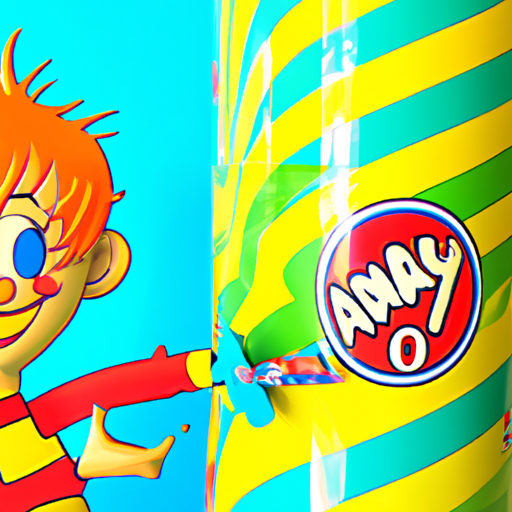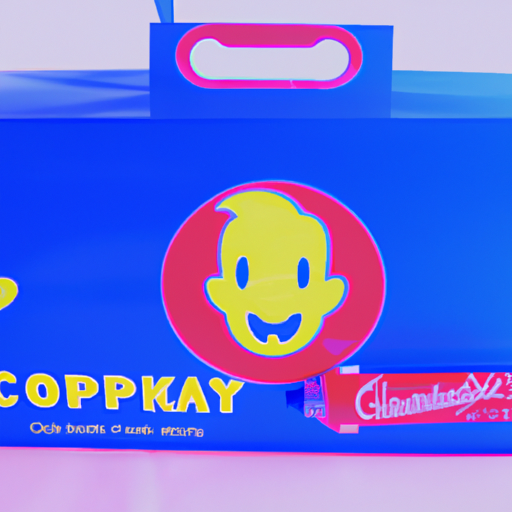
-
Table of Contents
- Packaging for Children’s Products: Fun and Functional
- The Power of Packaging
- Designing Fun and Engaging Packaging
- 1. Colorful and Eye-Catching Designs
- 2. Playful Shapes and Structures
- 3. Characters and Storytelling
- 4. Clear and Informative Messaging
- Functional Packaging for Children’s Products
- 1. Safety First
- 2. Easy to Open and Close
- 3. Portability and Convenience
- 4. Environmentally Friendly Packaging
- Conclusion
Packaging for Children’s Products: Fun and Functional

When it comes to children’s products, packaging plays a crucial role in attracting young consumers and their parents. The packaging not only needs to be visually appealing but also functional and safe. In this article, we will explore the importance of packaging for children’s products and how it can be both fun and functional.
The Power of Packaging
Packaging is often the first point of contact between a product and its potential consumer. For children, packaging can be even more influential as it captures their attention and sparks their curiosity. According to a study conducted by the Journal of Consumer Psychology, children as young as two years old can recognize and remember brands based on their packaging.
Children are drawn to bright colors, playful designs, and characters that they can relate to. Packaging that appeals to their senses and imagination can create a strong emotional connection, making them more likely to choose a particular product over others on the shelf.
Designing Fun and Engaging Packaging
Creating packaging that is both fun and engaging requires careful consideration of the target audience and their preferences. Here are some key elements to consider when designing packaging for children’s products:
1. Colorful and Eye-Catching Designs
Children are naturally attracted to vibrant colors. Using a variety of bright and bold hues can make the packaging stand out on the shelves and grab their attention. However, it is important to strike a balance and avoid overwhelming the packaging with too many colors.
For example, the packaging for LEGO sets features a combination of primary colors that instantly catch the eye. The colorful boxes not only showcase the product but also convey a sense of excitement and creativity.
2. Playful Shapes and Structures
Children love surprises and interactive elements. Incorporating playful shapes and structures into the packaging can enhance the overall experience. For instance, cereal boxes with cut-out characters that can be assembled into a toy or a puzzle can create a sense of anticipation and engagement.
Kellogg’s Rice Krispies Treats packaging is a great example of this. The box features a pop-out character that can be folded into a 3D shape, providing children with an additional playtime activity.
3. Characters and Storytelling
Children often form strong attachments to characters from their favorite books, movies, or TV shows. Including popular characters on the packaging can instantly grab their attention and create a connection with the product.
For instance, the packaging for Disney’s Frozen-themed merchandise prominently features characters like Elsa and Anna. This not only appeals to children who are fans of the movie but also helps parents identify products that their children would love.
4. Clear and Informative Messaging
While fun and engaging packaging is important, it should also provide clear and informative messaging. Parents rely on packaging to understand the product’s features, benefits, and age appropriateness. Including age recommendations, product descriptions, and safety information can help parents make informed decisions.
For example, the packaging for baby food products often includes clear labels indicating the age range and nutritional benefits of the product. This helps parents choose the right product for their child’s developmental stage.
Functional Packaging for Children’s Products
While fun and engaging packaging is essential, it should also serve a functional purpose. Here are some key considerations for designing functional packaging for children’s products:
1. Safety First
Safety should be the top priority when designing packaging for children’s products. Packaging should be free from any potential hazards, such as sharp edges or small parts that can be a choking hazard. It should also comply with relevant safety regulations and standards.
For example, LEGO ensures that their packaging is designed with child safety in mind. The boxes are made of sturdy materials and have clear warnings about small parts, ensuring that parents are aware of any potential risks.
2. Easy to Open and Close
Children often lack the fine motor skills required to open and close complex packaging. Designing packaging that is easy to open and close can enhance the overall user experience and prevent frustration for both children and parents.
Ziploc’s Easy Open Tabs are a great example of functional packaging. The resealable bags feature tabs that are easy for children to grip and open, allowing them to access the contents independently.
3. Portability and Convenience
Children’s products are often used on the go, whether it’s snacks, toys, or personal care items. Packaging that is portable and convenient can make it easier for parents to carry and use the products while on the move.
For instance, baby wipes packaging often includes a resealable lid or a dispenser that allows parents to easily access and use the wipes while traveling or outside the home.
4. Environmentally Friendly Packaging
With growing concerns about the environment, designing packaging that is eco-friendly is becoming increasingly important. Using sustainable materials and minimizing waste can not only appeal to environmentally conscious parents but also teach children about the importance of sustainability.
Brands like Green Toys have embraced eco-friendly packaging by using recycled materials and avoiding excessive packaging. Their packaging is not only functional but also aligns with their brand values.
Conclusion
Packaging for children’s products should be both fun and functional. By incorporating colorful designs, playful shapes, popular characters, and clear messaging, packaging can capture the attention of young consumers and create an emotional connection. Additionally, functional packaging that prioritizes safety, ease of use, portability, and sustainability can enhance the overall user experience for both children and parents.
When designing packaging for children’s products, it is important to consider the target audience, their preferences, and the specific needs of the product. By striking the right balance between fun and functionality, brands can create packaging that not only stands out on the shelves but also delivers a delightful experience for young consumers and their parents.
